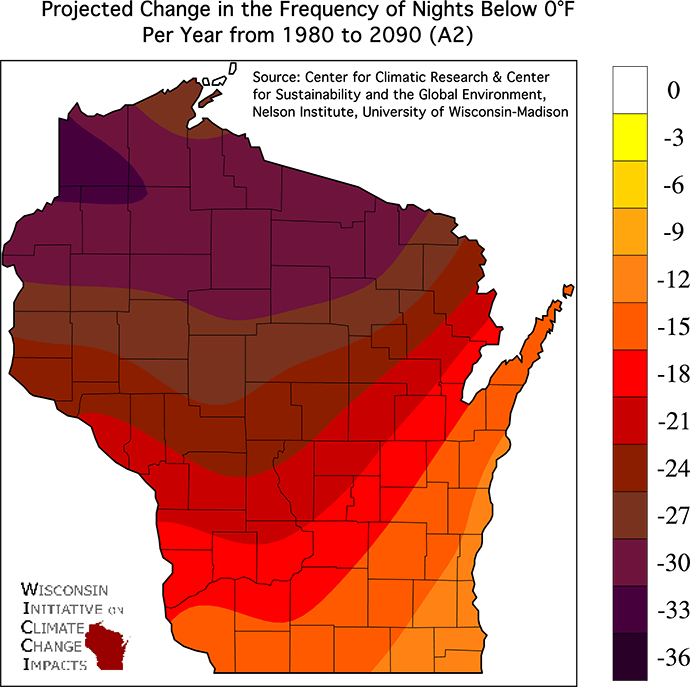
 |
||||
| |
||||
Wisconsin Climate Change and Ecological ImpactsCollaborators: David Lorenz, Dan Vimont, Steve Vavrus, Jack Williams, Chris Kucharik, John Kutzbach, Eric DeWeaver, Dick Lathrop Funding: Wisconsin Focus on Energy, UW-Madison Nelson Institute Publications: Notaro, M., J.W. Williams, and D. Lorenz, 2012: 21st century vegetation and land carbon projections for Wisconsin. Veloz, S., J. Williams, D. Lorenz, M. Notaro, S. Vavrus, and D.J. Vimont, 2012: Identifying climatic analogs for Williams, J. W., P. Tarasov, S. Brewer, and M. Notaro, 2011: Late Quaternary variations in tree cover at the Methods: Output from the IPCC AR4 global climate models were statistically downscaled over Wisconsin for 1961-2000, 2046-2065, and 2081-2100 for three emission scenarios. Projections of future climate change are developed at a 0.1 degree spatial resolution for the state. Statistically downscaled climate projections are used to force the LPJ vegetation model for the 21st century. Key finding: Wisconsin is likely to experience a substantial warming, increase in precipitation, increase in the intensity of precipitation events, reduction in cold nights, and increase in hot days. Projections are shown interactively at ccr.aos.wisc.edu/resources/data_scripts/ and more information on the Wisconsin Initiative on Climate Change Impacts (WICCI) is available at www.wicci.wisc.edu. Based on LPJ projections, the tension zone may dramatically shift poleward during the 21st century, with large losses of terrestrial carbon storage. |
||
 |
The frequency of nights with temperatures below 0°F is projected to decrease by 12-15 days per year across southern Wisconsin and 30-33 days per year across northern Wisconsin by the end of the century, based on the A2 emission scenario using WICCI downscaled climate data. | |